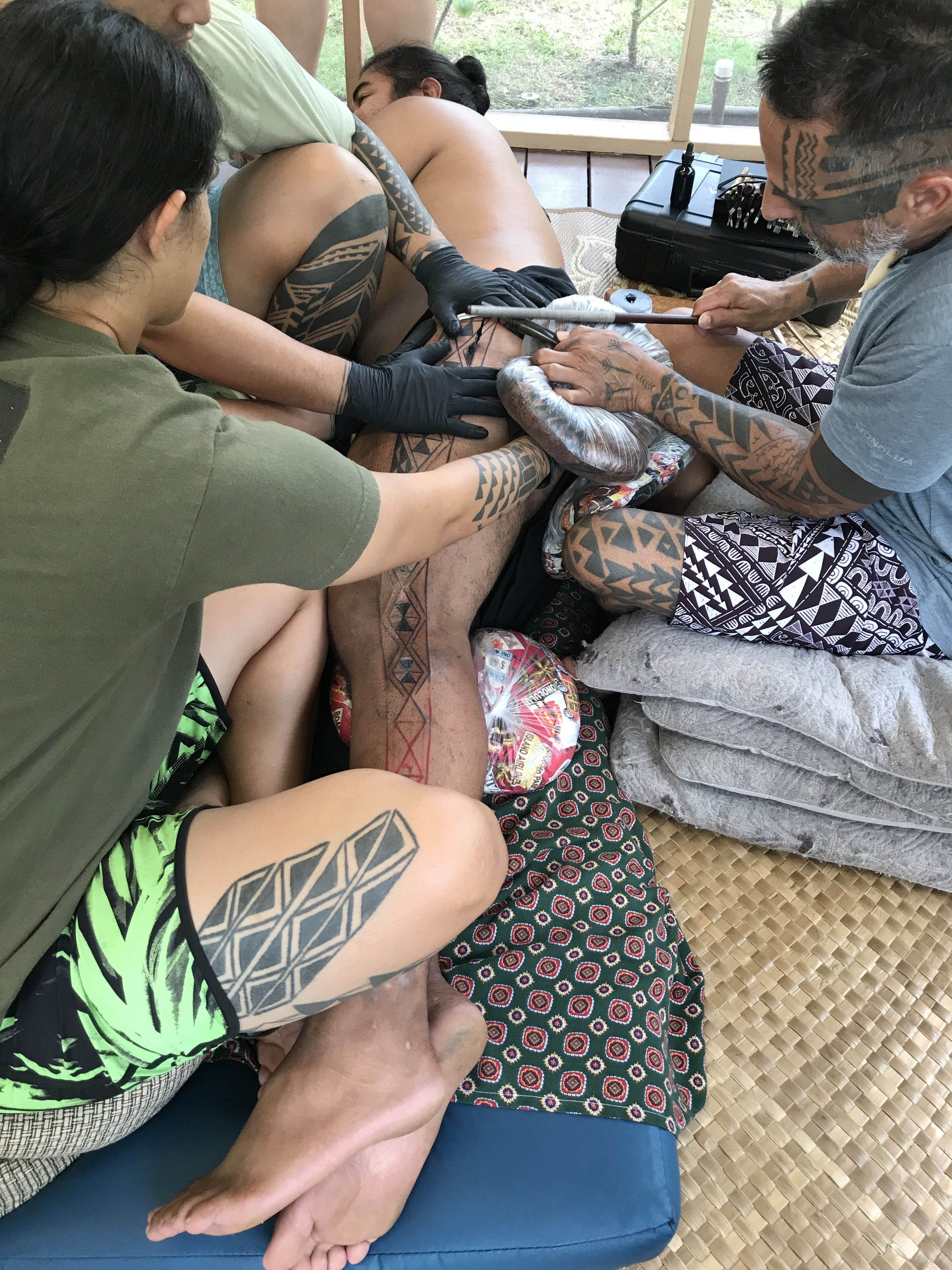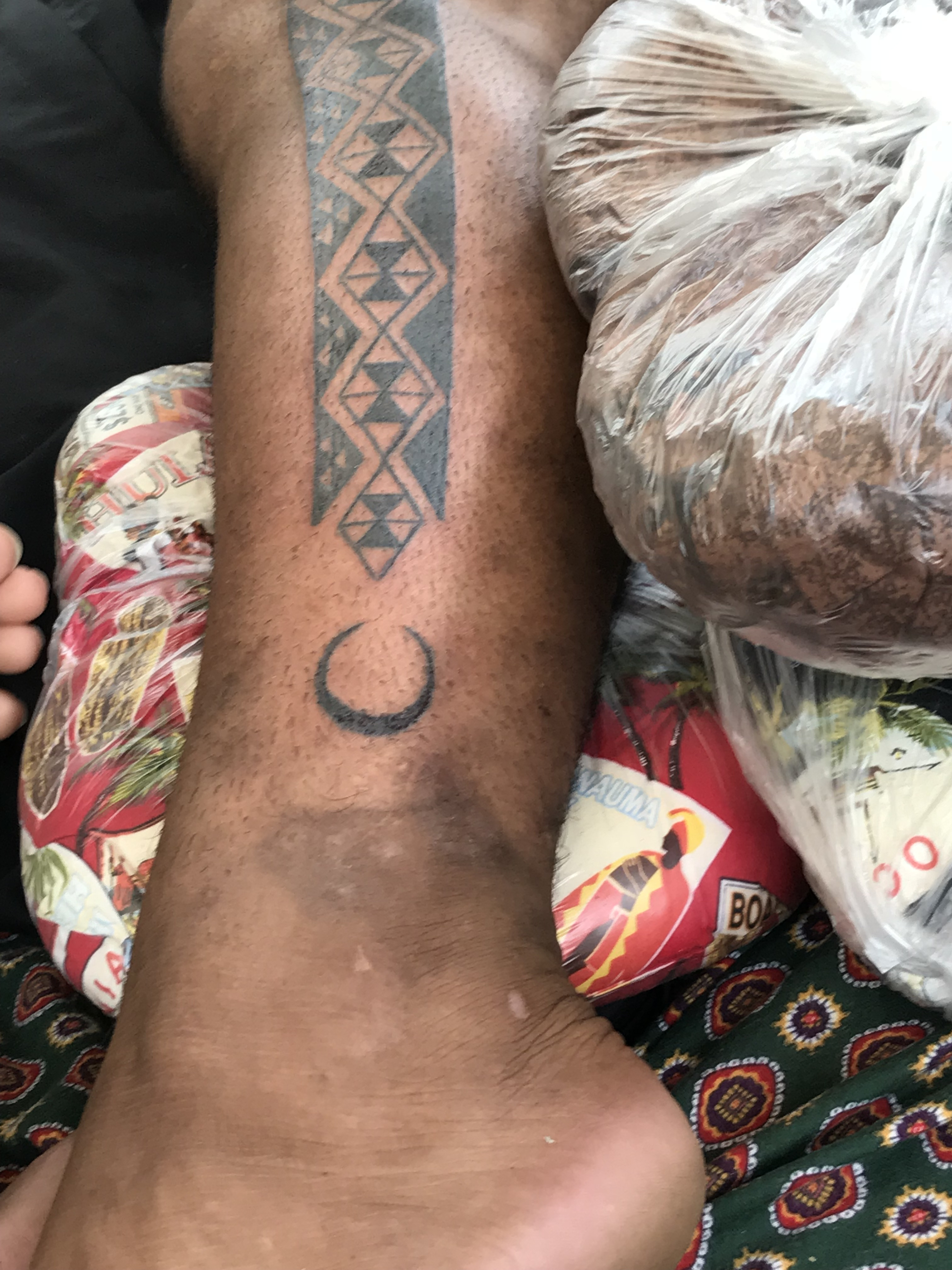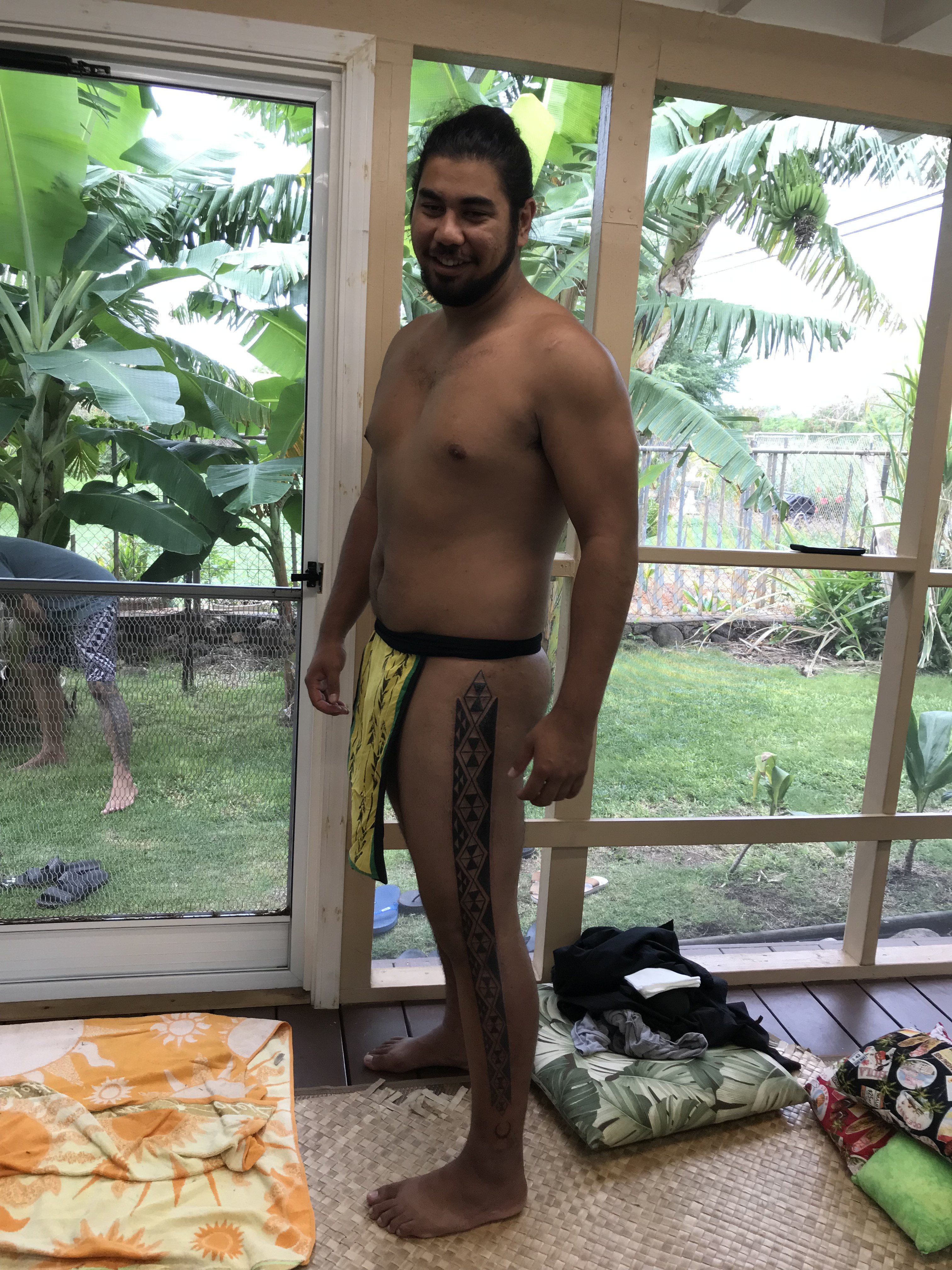The world of tattooing is rich and diverse, with traditions stretching back millennia. Among these, the art of Hawaiian Tattoo, known as kākau or uhi, stands out for its deep cultural significance and spiritual roots. Far removed from contemporary tattoo trends, kākau is a sacred practice, meticulously performed by skilled artisans and steeped in ancestral meaning. This exploration delves into the profound world of Hawaiian tattooing, revealing its history, symbolism, and the meticulous process behind this revered art form.
 IMG_2855
IMG_2855
The Origins and Meaning of Kākau
The term “tattoo” itself owes its origins to the Pacific, derived from the Hawaiian word kākau and the Tahitian word tātau. This linguistic connection underscores the profound historical impact of Polynesian cultures on the global understanding of body art. Captain James Cook, upon his voyages to the Pacific islands, brought this word back to Europe, forever changing the lexicon of body modification.
However, kākau is far more than just body decoration. In ancient Hawaiian society, tattoos were integral to identity, genealogy, and spiritual protection. Designs were not chosen lightly; they were carefully selected to reflect an individual’s lineage, social status, accomplishments, and mana (spiritual power). The process of receiving a kākau was a rite of passage, a deeply personal and transformative experience.
The Sacred Process and Tools of Kākau
Unlike modern tattooing with electric machines, kākau is a handcrafted art form utilizing traditional tools and techniques passed down through generations. The kahuna kā uhi (tattoo master) is not merely an artist, but a cultural practitioner, deeply knowledgeable in the history, symbolism, and spiritual protocols of kākau.
 IMG_2858
IMG_2858
The tools themselves are significant and often made by the kahuna. Traditional uhi (tattooing tools) are typically crafted from bone, often from the Hawaiian albatross, prized for its density and non-porous nature. These bones are meticulously sharpened into fine points or wider blades, depending on the desired design and area of coverage. The ink, traditionally derived from the soot of burnt kukui nut, is now often supplemented with commercial inks for longevity and vibrancy.
The application of kākau is a slow and deliberate process. The skin is stretched taut by apprentices, while the kahuna positions the uhi and taps it with a mallet-like tool, gently driving the pigment into the skin. This hand-tapping method, while more time-consuming than modern machines, is considered essential to the spiritual and cultural integrity of kākau.
Keli’i Makua: A Modern Kahuna Kā Uhi
In contemporary Hawaii, the tradition of kākau is experiencing a resurgence, thanks to the dedication of practitioners like Keli’i Makua. Honored as a Kahuna Kā Uhi (Uhi Master), Makua is recognized as the only Hawaiian who has received the authority to conduct the traditional kākau ceremony. His journey involved over two decades of rigorous study under his own master, Keoni Nunes, before inheriting this prestigious role.
Makua’s practice is deeply rooted in respect and cultural preservation. He emphasizes that kākau is not for everyone; it is a privilege earned through sincere intention and a connection to Hawaiian heritage. Prospective recipients undergo a personal interview process to assess their readiness and motivations. The meaning behind the tattoo must be profound, reflecting a genuine desire to connect with ancestors and embrace Hawaiian identity. While Makua has tattooed non-Native individuals, the underlying principle remains: the kākau must be imbued with sincere purpose, not mere cultural appropriation.
 IMG_2861
IMG_2861
The Transformative Power of Kākau
Recipients of kākau often describe profound personal transformations. The tattoo becomes a constant visual reminder of their heritage, family responsibilities, and community connection. It serves as an enduring symbol of identity and a commitment to upholding ancestral values. This powerful symbolism is what distinguishes kākau from purely aesthetic tattoos; it is a living embodiment of cultural pride and spiritual connection.
For those seeking a tattoo with deep meaning and cultural resonance, the art of Hawaiian kākau offers a unique and transformative experience. It is a testament to the enduring power of tradition and the profound connection between body art and cultural identity.
Learn More About Hawaiian Tattoo:
